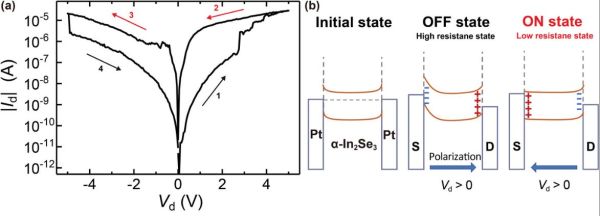The ferroelectrical properties of materials have found a variety of uses over the years, including in semiconductor applications. Ferroelectric memory is among the most interesting and possibly world-changing as it could replace today’s fragile and (relatively) slow NAND Flash with something that’s more robust and scalable. Yet as with any good idea, finding the right materials and process to implement it is half the battle. Here is where a recently released paper in Advanced Science by Shurong Miao and colleagues demonstrates a FeFET-based memory cell design using α-In2Se3 material on platinum-based source-drain electrodes. Continue reading “New Type Of Ferroelectric Memory Constructed Using α-In2Se3 Material”
ferroelectric2 Articles
Making Ferroelectric Solar Cells Better
Researchers claim that using several very thin layers of ferroelectric crystals can lead to significantly better ferroelectric solar cell efficiency. But don’t pull the panels off your roof yet. Conventional cells are still much more efficient than ferroelectric devices — at least, for now.
Unlike conventional silicon-based solar cells, ferroelectric cells don’t depend on a PN junction and — in theory — can be cheaper and easier to produce. However, they typically don’t absorb as much sunlight as other materials.













